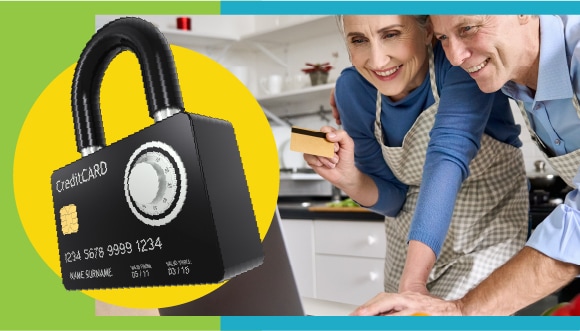Online shopping has made our lives more convenient than we could have ever imagined. With the right combination of taps or clicks on your screen, you can order just about anything without having to leave your bed or put actual pants on – something that’s been particularly handy for many of us throughout the pandemic. 
If your preference is making purchases in-store, online shopping may seem a little daunting. With so many retailers to choose from online, it can be easy to feel overwhelmed – especially when there are fraudulent sites that are out to steal your money and information.
To help you become a more confident online shopper, we’ve outlined some tips on how you can spot scams to stay safe online.
How to spot a spoofed site
Spoofed websites are fraudulent sites made by cyber criminals. They’re designed to imitate the look and feel of familiar, legitimate retailers. But they’re really scams to steal your personal information and money. The best way to protect yourself from spoofed sites is to learn how to recognize their red flags:
- To the left of the URL in your web browser, there is a tiny padlock. A locked padlock is a sign that the site’s information is encrypted, while an unlocked padlock means that any information you send to the site could be accessed by hackers. Never buy things from a site that doesn’t have this padlock.
- While you’re looking at your address bar, take a second look at your web address to make sure there are no typos. Cyber criminals often purchase domains of commonly misspelled sites to trick you. You should also confirm that the web address starts with HTTPS, which indicates that the website is secured.
- Look for a privacy policy and a return policy. All legitimate e-commerce stores should include both of these things, so it may be suspicious if they are missing.
- Be wary of prices that are suspiciously low or high. Do some research before buying to get a general idea of what your item usually costs. If it seems like it’s too good to be true, it probably is.
- Be on the lookout for typos, pixelated or blurry images or logos, and web pages that are difficult to navigate. There’s a good chance the site isn’t legitimate if it includes any or all of these.
How to keep your personal information secure
Online shopping could put you at risk for identity theft or financial loss if you aren’t cyber safe. One of the easiest ways to protect your information is to secure your online accounts. Ensure that each of your accounts uses a strong and unique passphrase or password. Enable multi-factor authentication (MFA) whenever it’s available for your accounts.
You should never store your credit card information in your browser, even if you’re prompted to. Doing this allows anyone with access to your device to make purchases with your saved card. The same goes for your login information, including your online shopping accounts. Consider using a password manager to store your sensitive information instead.
Another way to keep your information secure in public is to use a virtual private network (VPN). Using free public Wi-Fi is a convenient way to connect when you’re in a public location, like a café or library, but cyber criminals will often set up malicious hot spot networks at these locations so they can steal your data. If you make purchases when you’re out and about, we recommend using a VPN, or disconnecting your Wi-Fi and using your mobile data. Or simply wait until you’re at home on your own secure network.
Conclusion
Anyone can become a confident online shopper by watching out for online scams. You can stay secure by protecting your identity and understanding the potential risks of shopping online.
By getting cyber safe, you can enjoy the convenience of online shopping from the comfort of your home.